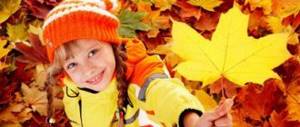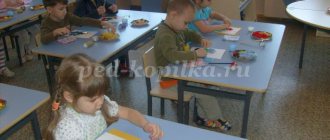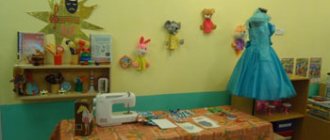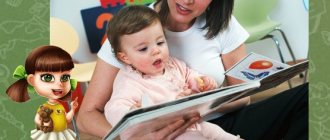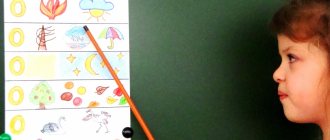Formation of coherent speech through visual modeling. - presentation
Formation of coherent speech through visual modeling
Visual modeling is the reproduction of the essential properties of the object under study, the creation of its substitute and work with it. The visual modeling method helps the child visually imagine abstract concepts (sound, word, sentence, text) and learn to work with them. This is especially important for preschoolers, since their mental problems are solved with the predominant role of external means; visual material is absorbed better than verbal material. (T.V. Egorova 1973; A.N. Leontyev 1981). The preschooler is deprived of the opportunity to write down, make a table, or mark anything. In kindergarten classes, only one type of memory is mainly involved - verbal. Supporting schemes are an attempt to use visual, motor, and associative memory to solve cognitive problems. Scientific research and practice confirm that visual models are the form of highlighting and designating relationships that is accessible to preschool children (Leon Lorenzo S., Khalizeva L.M., etc.). Scientists also note that the use of substitutes and visual models develops the mental abilities of preschoolers.
Based on this, the relevance of using visual modeling in working with preschoolers is that: firstly, a preschool child is very flexible and easy to teach, but they are also characterized by rapid fatigue and loss of interest in activities. Using visual modeling creates interest and helps solve this problem; secondly, the use of symbolic analogy facilitates and speeds up the process of memorizing and assimilating material, and forms techniques for working with memory. After all, one of the rules for strengthening memory says: When you teach, write down, draw diagrams, diagrams, draw graphs; thirdly, using a graphic analogy, we teach children to see the main thing and systematize the acquired knowledge.
Visual modeling is: reference pictures, mnemonic tables, symbol cards, real objects, etc.
Reference pictures are: Subject pictures Subject pictures Series of subject pictures They are used to familiarize yourself with objects, compose a story, a descriptive story.
Subject pictures
Story pictures
A series of plot pictures
Mnemonics. Diagrams and mnemonic tables Nowadays, we often come across the fact that children cannot compose stories looking only at pictures, and this is where the need to use mnemonics arises. Mnemonics - translated from Greek - “the art of memorization.” This is a system of methods and techniques that ensure successful memorization, preservation and reproduction of information, knowledge about the characteristics of natural objects, the world around us, effective memorization of the structure of a story, and, of course, the development of speech. Using mnemonics, the following tasks are solved: Develop coherent and dialogic speech. To develop in children the ability, with the help of graphic analogy, as well as with the help of substitutes, to understand and tell familiar fairy tales, poems using a mnemonic table and collage. Teach children correct sound pronunciation. Introduce letters. To develop in children mental activity, intelligence, observation, the ability to compare, and identify essential features. To develop mental processes in children: thinking, attention, imagination, memory (various types).
Mnemonic tables are a graphic or partially graphic representation of fairy tale characters, natural phenomena, some actions, etc. by highlighting the main semantic links of the plot. The main thing is to convey a conventionally visual diagram, to depict it in such a way that what is drawn is understandable to children. Schemes serve as a kind of visual plan for creating monologues, help children build: - the structure of the story, - the sequence of the story, - the lexical and grammatical content of the story. Mnemonic tables and diagrams serve as didactic material in the development of coherent speech in children. I use them for: enriching vocabulary, when learning to write stories, when retelling, when memorizing poetry.
Descriptive story. This is the most difficult type in monologue speech. The description involves all mental functions (perception, attention, memory, thinking). The use of diagrams provides significant assistance to children in composing such stories. These can be ready-made diagrams, or you can create them yourself.
To describe vegetables and fruits, you can use the following schemes:
Description of pets: and others.
Retelling. Retelling is a type of child’s work, a means of developing speech based on a model. It consists of the child conveying the content of the text read. It plays a special role in the formation of coherent speech. Here the structure of speech, its expressiveness, and the ability to construct sentences are improved. And if you retell it using mnemonic tables, when children see all the characters, then the child already concentrates his attention on the correct construction of sentences, on reproducing the necessary expressions in his speech.
"Chicken Ryaba"
You can prepare such mnemonic tables for any story yourself. Below I will give an example. Pine Sasha and Masha went into the forest for pine checkers. Here is the edge of the forest. There is a tall pine tree at the edge. The pine tree has thick fluffy branches. And high up, at the very top of the head, there are big cones. The cones fall noisily down to the ground. There are a lot of cones under the pine tree. Sasha and Masha raise their cones. They rush home with a bag of cones.
You can also draw an illustration for a story, the main thing in this drawing is to show as many details as possible.
A good result will be if the child is asked to draw an illustration for the story himself.
Poems. Mnemonic tables are especially effective when learning poems. The bottom line is this: for each word or small phrase, a picture (image) is created; Thus, the entire poem is sketched schematically. After this, the child reproduces the entire poem from memory, using a graphic image. Today there are a huge number of ready-made mnemonic tables and illustrations for poems, let’s look at some of them.
My bear (excerpt) I sewed a shirt for the bear, I will sew his pants, I need to sew a pocket on them and put some candy. (Z.Alexandrova)
Santa Claus sent us a Christmas tree... Santa Claus sent us a Christmas tree and lit the lights on it. And the needles shine on it, And on the branches there is snow! V. Petrova
Drawn mnemonic tables. You can draw such a table for any poem yourself. Our pussy watches TV with us. It sees the mouse on the screen. The mouse seems to be close. It could have been a nice lunch. Just grab it, but there’s no mouse!
You can also simply draw an illustration for the poem (it should be a detailed illustration). Poem by V. Avdienko “Autumn” Autumn walks along the path, Gets her feet wet in the puddles. It's raining and there's no light. Summer is lost somewhere. Autumn is walking, autumn is wandering. The wind knocked the leaves off the maple tree. There is a new rug underfoot, yellow-pink - maple.
From the above, we can conclude that visual modeling, and specifically mnemonics, is an effective method in teaching children. And the sooner we start teaching children to tell, retell and memorize poems using this method, the better we can prepare them for school, since coherent speech is an important indicator of a child’s mental abilities and his readiness for school.
Thank you for your attention
Using the modeling method in teaching preschool children
Using the Simulation Method
in teaching preschool children
In modern conditions of rapidly changing life, a child is required not only to possess knowledge, but also, first of all, to be able to obtain this knowledge himself and operate with it. One of the main tasks of modern pedagogy is the search for opportunities to use the hidden reserves of children’s mental activity, the search for ways of effective learning. One of these ways that intensively develops children's cognition can be modeling.
A preschooler is deprived of the opportunity to write down, make a table, or note anything in writing. In kindergarten, only one type of memory is mainly involved - verbal. Modeling is an attempt to use visual, motor, and associative memory to solve cognitive problems. The accessibility of this method for preschoolers is determined by the fact that modeling is based on the principle of substitution - a real object can be replaced in children’s activities by another sign, object, or image.
The relevance of using visual modeling in working with children is that:
- the use of visual modeling arouses children’s interest;
— facilitates and accelerates the process of memorizing and assimilation of material, forms techniques for working with memory;
— using modeling, we teach children to see the main thing, to systematize the acquired knowledge.
Modeling -
visual and practical teaching method. The modeling method was first developed by teachers and psychologists. It lies in the fact that a child’s thinking is developed with the help of special schemes, models, which reproduce the hidden properties and connections of a particular object in a visual and accessible form.
Many preschool teaching methods are based on the use of visual models, for example, the method of teaching preschoolers to read and write (L. E. Zhurova) involves the construction and use of a visual model of the sound composition of a word. Issues of using visual modeling to form ideas about the work of adults have been developed (,). Great importance is attached to the use of graphic modeling in productive activities of children (,), in design (). Models can be used when children perform physical exercises (for this, the movements are encrypted in the drawing, the teacher just needs to show the card, and the children begin to perform the exercise depicted on the model). In general, the modeling method, with sufficient study, can be successfully applied in all educational areas of preschool education.
Today we will dwell in more detail on the use of visual modeling in the formation of coherent speech in preschool children
Models are divided into three groups
1. Subject.
They help reproduce the structure and features, internal and external relationships of real objects and phenomena. These are different objects and designs (model of an aquarium, Earth, natural zones “North”, “Forest”)
2. Subject-schematic models
. Here, the essential components identified in the object of cognition and the connections between them are indicated using substitute objects and graphic signs. An example of a simple subject-schematic model can be a model for revealing the concept of protective coloring, as a manifestation of the connection of an animal with its environment (a sheet of cardboard of a certain color and the figure of an animal: if their colors match, then the animal is not visible).
3. Graphic models
. They convey generally (conditionally) the characteristics, connections and relationships of phenomena. An example of such a model would be a weather calendar kept by children using special symbols to indicate phenomena in inanimate and animate nature.
One of the types of graphic models is mnemonics.
Mnemonics in preschool pedagogy are called differently: this technique is called
sensory-graphic diagrams
, -
subject-schematic models
, N -
a scheme for composing a story,
mnemonics is also called
symbolic analogy, graphic analogy, pictograms
Mnemonics
- a system of various techniques that facilitate memorization and increase the memory capacity of children by forming additional associations, organizing the educational process in the form of a game. The use of mnemonics is currently becoming relevant. The main “secret” of mnemonics is very simple and well known. When a person connects several visual images in his imagination, the brain records this relationship. And later, when recalling one of the images of this association, the brain reproduces all previously connected images. Mnemonics is a set of rules and techniques that facilitate the process of memorizing information.
Reliance on a visual image is very important and mandatory, since if, when reproducing the text, this visual image does not appear in the imagination, then the child does not understand this text. Thus, the technique of symbolization is the shortest way to forming the process of memorization and accurate transmission of information that requires verbatim repetition, for example in poetry. For this, a schematic representation of the individual parts is sufficient, which will facilitate memorization and subsequent reproduction of the entire image in rhymed form.
The models are multifunctional. They can be used in direct educational, joint and independent activities.
I will briefly touch on the methods of teaching children graphic models or graphic analogy
Using a graphic analogy, we teach children to see the most important thing (as if using the folding technique). Where to start?
Start with the simplest thing, play the game “What’s in the circle?” with your children. In this game, children become familiar with the symbols of any objects, learn to classify, and develop communicative activity.
Draw, for example, circles on a sheet of paper; these can be triangles, squares - any geometric figure and at the same time list: “This is an apple, this is a pear, this is a plum,” etc. Usually children understand what objects you are listing and help name the missing ones. Then draw a big circle around it and ask: “What did you list? (Fruits)? Then what is a circle? Next, give the children the opportunity to list all the options: a circle is a garden, a basket, a vase, a plate, a store, a market, a dish, a still life... When the children’s answers run out, say: “No, this is not fruit, this is...” - you can list several options names of pieces of furniture. Then the big circle will be an apartment, a warehouse, a store, a kindergarten, etc. Or - in a circle there are vegetables, birds, flowers, trees, toys, even the children themselves - there is a lot of room for work. The main goal of the game is to show children that an object can be designated by a geometric figure.
Then you can go further - propose to designate objects not by any shape, but by one that in appearance resembles the above. For example, vegetables, fruits - in a circle; furniture, houses - rectangle; person - a triangle. This will strengthen your children’s ability to see an abstract image of an object.
When children learn to depict surrounding objects and heroes of works with symbols, you can offer to create a model of a fairy tale. It is necessary to create symbol cards together with the children. It is most convenient to do this in special moments. We must remember that the number of lines in a symbolic analogy should be minimal. In younger groups, when children are just being introduced to symbolization, the teacher can offer them cards to choose from. Discuss and play with these images with the kids so that the children can see for themselves and convince us which card means what. Show a card with a picture of a circle and ask, “What does it look like?” The answers will be different: ball, circle, wheel..., sun. “Let’s make sure the sun shines.” The kids will definitely say that there are not enough rays. So a new symbol was born.
Starting from the middle group, when the children already have broader concepts about the world around them, they themselves are involved in drawing up symbol cards. Each child independently comes up with his own symbol, explains why he drew it this way and not otherwise, then during the discussion the most suitable one is chosen.
It is very convenient to use the technique of empathy. For example, with the help of the teacher’s leading questions, the child takes on the role of a dog that barks furiously, falling on its front paws, or the role of a disheveled kitten whose fur is raised upward.
When compiling cards-symbols denoting actions, signs of objects, states (fun, plaintive, scared, etc.) for a more complete understanding, it is necessary to play with the children, reproduce the action at the emotional-gestural level
When there are many words in the text that belong to one part of speech, the teacher can play with the children this way: put out a number of cards with symbols, and the children choose the one they need based on the text from the many offered.
It is important to remember that the use of graphic analogy requires taking into account the age characteristics of children
Today, teachers of Preschool Educational Institution No. 21 will share their experience of working with visual and graphic models, which are used to enrich vocabulary, form grammatical structure of speech, develop coherent speech, and tell you about the use of models when solving riddles and memorizing poetry
Under the pines, under the fir trees, there is a bag of needles.
Round, but not a ball, yellow, but not a pumpkin, with a tail, but not a mouse
In the clearing, by the path, there are red peas. Whoever passes by puts it in his mouth
The main feature of the riddle is that it is a verbal-logical task. To guess a riddle means to answer a question, that is, to perform a complex logical operation
Observations of children show that guessing occurs in the most intelligent preschoolers, as if by itself or by enumerating options. At the same time, most of the children in the group are passive observers. The teacher acts as an expert. The correct answer of a gifted child to a specific riddle is very quickly remembered by other children. If the teacher asks the same riddle after some time, then most of the children in the group simply remember the answer. When developing a child’s mental abilities, it is more important to teach him to compose his own riddles than to simply guess familiar ones.
By asking riddles, you teach your child to reason, draw conclusions and prove his point of view.
There are several models for composing riddles. I'll introduce you to some of them
| Which? | What happens the same? |
To create a riddle, an object (the sun) is selected. Next, the children give figurative characteristics according to the characteristics specified by the teacher.
After filling out the tablet, the teacher offers to read the riddle, inserting the connectives “How” or “But not” between the lines of the right and left columns. Orange, but not an orange, round, but not a ball, luminous, but not a light bulb
What color is the sun? (Orange) What happens the same? (Orange)
What is its shape? (Round) What happens the same? (Ball)
What kind of sunshine is it in terms of actions? (luminous). What happens the same? (Bulb)
“What does it look like? What is the difference?"
The peculiarity of mastering this model is that the child, comparing one object with some other object, finds common and different between them.
Protocol for composing a riddle about a mushroom:
-What does a mushroom look like? - For a peasant.
- How is it different from a peasant? — The mushroom has no beard.
-What else does it look like? - To a house, but without windows.
- And what else? — Like an umbrella, but the umbrella has a thin handle.
The text of the resulting riddle: “Looks like a peasant, but without a beard; looks like a house, but without windows; like an umbrella, but with a thick stem.”
Mnemonic tables are especially effective when learning poems. The bottom line is that for every word or small phrase a picture (graphic image) is created; Thus, the entire poem is sketched schematically. After this, the child reproduces the entire poem from memory, using a graphic image. At the initial stage, the adult offers a ready-made plan - a diagram, and as the child learns, he is also actively involved in the process of creating his own diagram. Mastering the techniques of working with mnemonic tables significantly reduces training time and at the same time solves problems aimed at: developing basic mental processes - memory, attention, imaginative thinking; development of fine motor skills of the hands with partial or complete graphic reproduction of the text. Mnemonics helps develop: associative thinking, visual and auditory memory, visual and auditory attention, imagination. Using supporting drawings to teach memorizing poems captivates children and turns the activity into a game. The visual image that the child retains after listening, accompanied by viewing the drawings, allows him to remember the text much faster.
To learn each poem, you need to develop your own mnemonic table, select pictures for the selected poem (preferably for each line). And so, step by step, a mnemonic table is created.
The next stage of working with the mnemonic table is an emotional, expressive reproduction of the text of the poem. Then vocabulary work is carried out on the work, a conversation is held on the meaning of what was read, and children are given the opportunity to reproduce the text based on the drawings
Practice shows that gradually the memory of preschoolers is strengthened, their imaginative thinking develops, they remember texts much better, larger in volume, easier and more emotional. With this method of working, the entire poem is remembered. Learning has become a fun, emotional activity for preschoolers, and at the same time the content of the text is tangible, visible, imaginable.

